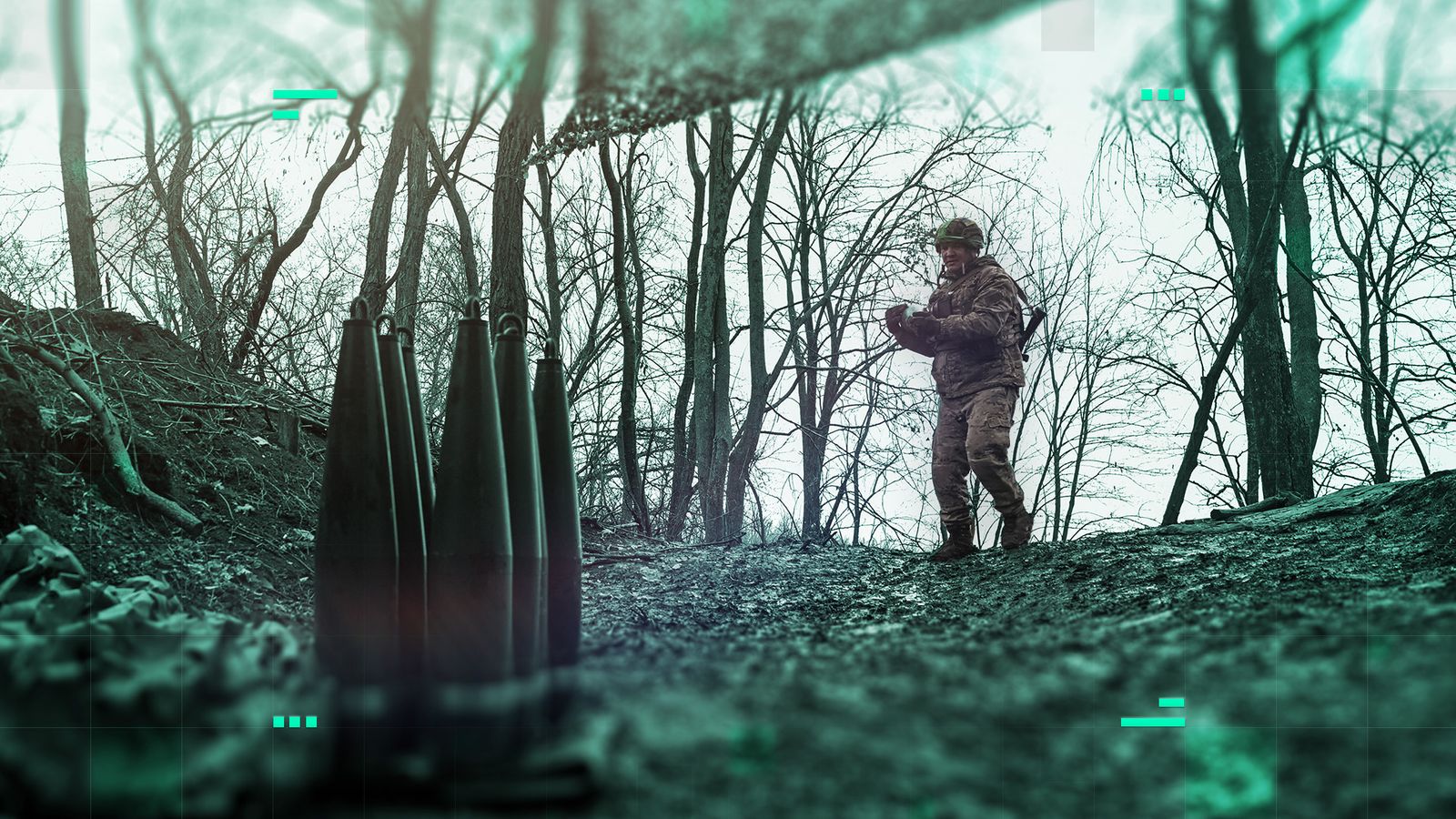
The warning from Iran to Israel is written on the side of a missile. It reads: “Decisive victory.”
Posters of the political leader of Hamas and the head of Hezbollah – both killed in Israeli strikes – are also plastered on ballistic missiles in a slickly produced video released by Iran’s revolutionary guard to state media channels.
The footage purports to show last Tuesday’s revenge attack on Israel, with multiple munitions then blasting into the sky in a barrage of fire, edited to a religious song used at times of war.
It is impossible to tell if these were among the actual nearly 200 missiles used in the strikes.
But the aim seems to be to demonstrate Iran‘s firepower in a fight where words and images are as much of a weapon as bullets and bombs.
Israel-Iran latest: Powerful explosions near Beirut airport
Despite the impression of destruction created by the three-minute video, Israel says much of the incoming fire was intercepted.
Its military has acknowledged that a number of airbases were hit but it deemed the onslaught “ineffective”, pointing to how Israeli warplanes were still able to operate afterwards.
A conflicting battle of narratives is common in war, with either side needing to convey the impression that they are winning regardless of the reality.
In the case of Iran’s missile attack, an Iranian claim that 90% of its munitions struck their targets is particularly hard to believe, though, given the number of intercepts that were clearly visible during the attack.
Yet, an Israeli counterclaim that the damage it suffered was limited is also impossible to verify without access to the military sites that did suffer impacts.
Read more from Sky News:
Israel strike in West Bank ‘kills 18’
Doctors in Lebanon living in fear
Netanyahu: Israel’s longest serving leader
What is Iran’s axis of resistance?
For its part, the Israel Defence Forces (IDF) have a huge information operation that has been playing a dominant role in the war ever since the 7 October Hamas attacks.
Footage, photographs and graphics of military strikes, operations and exercises are issued daily across social media channels and to all mainstream media organisations.
The resources and effort put into this careful, timely messaging of military manoeuvres underlines the critical importance attached by the Israeli government to trying as much to win battles in the information space as it does to win the actual war fighting on the ground.
The IDF also uses videos and other posts to communicate directly with its enemies.
A few days ago, it published a clip on X, formerly known as Twitter, that showed a line of dominos – each bearing an image of a Hezbollah commander, right up to Hassan Nasrallah, the leader – toppling one after the other.
The video finished with more dominos still standing for now, but bearing blank faces, followed by the words: “To be continued.”













